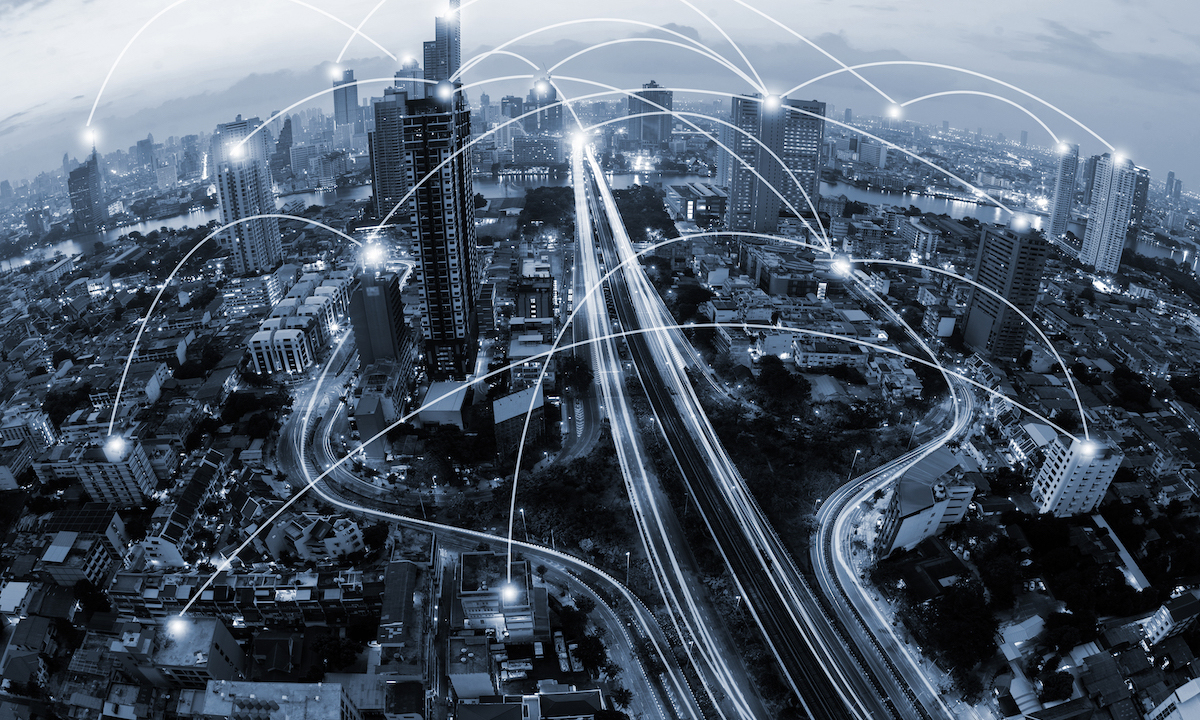The future of 5G—and implications for the supply chain

While the onset of COVID-19 exposed some vulnerabilities in our ability to deliver goods, wider impacts on the supply chain were calling for necessary advancements before the pandemic hit. Specifically, the move toward 5G will likely improve the implementation of much-needed IT and AI systems to support supply chain management. But, like most things in life, the path to 5G isn’t that simple.
The SIOR Chicago Chapter was introduced to these complexities during our July 23 virtual event featuring a presentation from Howard Tullman, the executive director of the Ed Kaplan Family Institute for Innovation and Tech Entrepreneurship and the general managing partner for the Chicago High Tech Investment Partners, LLC and for G2T3V, LLC, two early-stage venture funds.
Tullman’s presentation addressed how the future of 5G will require significant infrastructure and supply chain updates, though the impacts will be profound. To get in front of this upcoming transformation in our connected world, industrial real estate professionals should be considering the following.
The pandemic is already pushing us forward
With the disruptions in the supply chain that occurred early on in the pandemic, the weaknesses of our infrastructure became clear and unavoidable. Tullman considered how the U.S. has lived in a state of “just-in-time” when it comes to our expectations of manufacturing, supply, materials and tech delivery. We’ve been able to access the materials and technology we need, when we need it.
Now, we’re being pushed into a “just-in-case” situation, where our supply chain will need to be more proactive and diversify its sources to adapt to any new disruptions. One way this is already being implemented is through last-mile fulfillment centers, and Tullman anticipates a near-term wave of manufacturing being re-shored to the U.S. for more convenient distribution.
One other major leap into the future due to the pandemic has been our adoption of videoconferencing technology. Tullman mused that our acceptance of that tech as a business tool accelerated by about five years, and it will likely create an entire generation of the workforce that will only work remotely.
In times of chaos, innovation can provide clarity and a path forward, and these two major shifts in our economy will need enhanced networks that can support more robust AI, machine learning and consumer technology. These tech systems can help reduce production costs and increase speed to market. But currently, according to Tullman, our network is not completely prepared to support those systems as effectively as it needs to be. That’s where 5G comes in.
We’ll get 5G, but it’s hard to say when
There’s been plenty of hype—both good and bad—around the advent of 5G in the U.S., though most of the conversations about it are related to the consumer experience. And even for the average consumer, the implementation of 5G won’t really impact the main thing it’s being marketed to improve: smartphone capacity. However, 5G can enable other tech tools that create a smart home, such as Nest hubs and smart fridges.
But when will we see its implementation? Tullman laid out several considerations that make the timeframe a little unpredictable. At this point, 4G is basically meeting the needs of consumers, so the demand isn’t as high as some carrier companies would have you believe. The updating of the entire network would also require consumers to buy all new equipment—smartphones, tablets, laptops, software—to utilize the stronger system. Additionally, the implementation of 5G will require trillions of dollars of infrastructure investment over many years. And a network is only as strong as its weakest link, so it wouldn’t be fully functional until it completely replaced 4G.
Further, a worldwide standard is necessary to create global efficiencies in the network. Up until now, the U.S. and Europe have led the development of the 4G infrastructure, but as it stands currently, China is dominating the development of 5G. As evidenced by the ongoing stand-off surrounding the potential ban on Chinese-owned app TikTok, the U.S. is wary of Chinese-based technology. The potential of a China-controlled 5G network may create national security concerns and shift global hegemony away from the U.S. Until the tension between the two countries dies down—or the demand for 5G outweighs the political posturing–5G may take longer to meaningfully come to fruition in the U.S.
Taking all of these factors into consideration, Tullman estimated that significant adoption and deployment of 5G will start in 2022 and support the full network by 2026.
What will 5G really improve—and transform?
The benefits of 5G will be substantial. In addition to dramatically increasing data storage, the number of simultaneous users, better battery life and support of Internet of Things (IoT) devices, it will allow our software to connect on the fly to a network to meet varying needs—ultimately supporting the new “just-in-case” approach.
Real estate professionals should focus on a few potential affects. Autonomous vehicles are still reliant on human supervision, but 5G could allow the self-driving vehicles to communicate with each other, which is crucial to true autonomy—and will enhance last-mile delivery. As 5G will improve telecommuting technology, it’s possible that the workforce’s preferences will lean more toward suburban living and officing, potentially shifting the current balance between cities and suburbs.
Additionally, the implications on manufacturing and 3D printing will be immense. With improved connectivity, AI and machine learning can reduce human error, anticipate and shorten maintenance downtime and increase the communication between systems. As the equipment becomes more sophisticated, 5G will support much more efficient manufacturing production as well as 3D printing.
Ultimately, the impacts of 5G will be felt thoroughly throughout the supply chain and in many aspects of commercial real estate. Those who end up ahead of the curve will be considering these outcomes now—and advising clients on how to prepare for the ultra-connected future.

About the author
Tom Boyle, SIOR is a Principal at Lee & Associates and he serves as the 2020 President for the SIOR Chicago Chapter.
